
We recommend tourist attractions that represent Incheon
We recommend tourist attractions that represent Incheon
-
-
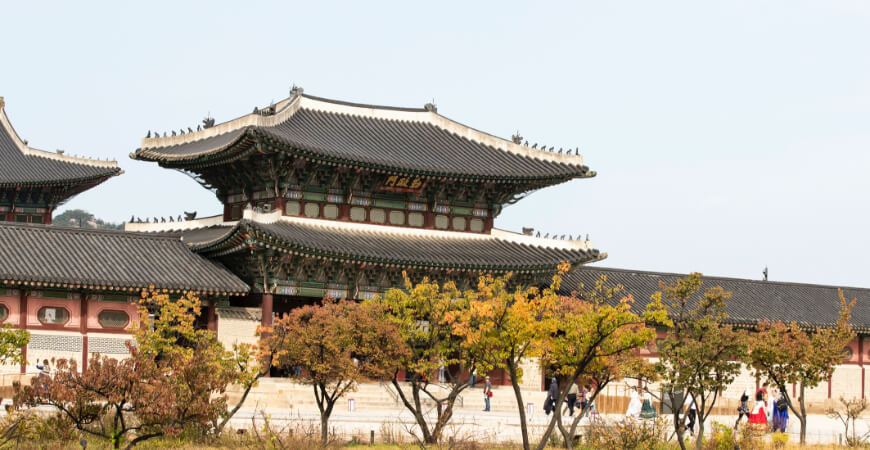 Gyeongbokgung PalaceLink to page
Gyeongbokgung PalaceLink to page
Gyeongbokgung has the meaning of enjoying a big blessing and prosperity. As the palace was established by Royal Family, it was used as the main palace. However, as the palace was burnt down during Japanese Invasion of 1592, it was restored at the latter Kojong Era. Gyeongbokgung Palace lost most of internal building, so most of royal palace except for Geunjeongjeon(Governing Hall) Gyeonghoeru (Royal Banquet Hall) was rebuilt. However, the position of building remained unchanged, so tourists can have a glimpse of how the main palace of Joseon Dynasty stands.
Photo by (Lee Beonsu)-KTO- From Incheon Port Cruise Terminal
- 57.0 km 80 min
-
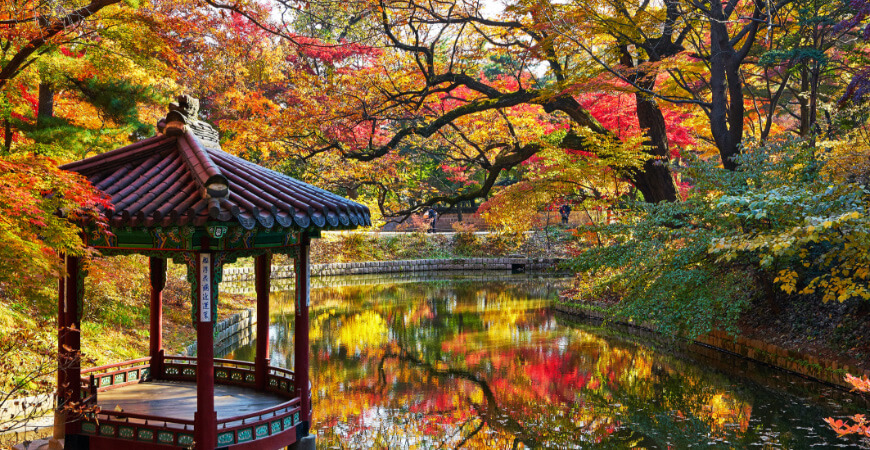 Changdeokgung PalaceLink to page
Changdeokgung PalaceLink to page
Changdeokgung Palace is a royal palace of Joseon Dynasty serving as an example of integrated environmental design showing how architecture and landscape strike the harmony. At the same time, it is a major cultural heritage indicating what traditional Korean space looks like. Changdeokgung Palace shows a classic example of royal palaces of Joseon and backyard garden has a high value as the representative royal garden. Changdeokgung Palace was recognized as UNESCO World Cultural Heritage for pursuing harmony with the nature.
Photo by (Lee Jeonggyu)-KTO- From Incheon Port Cruise Terminal
- 59.5 km 85 min
-
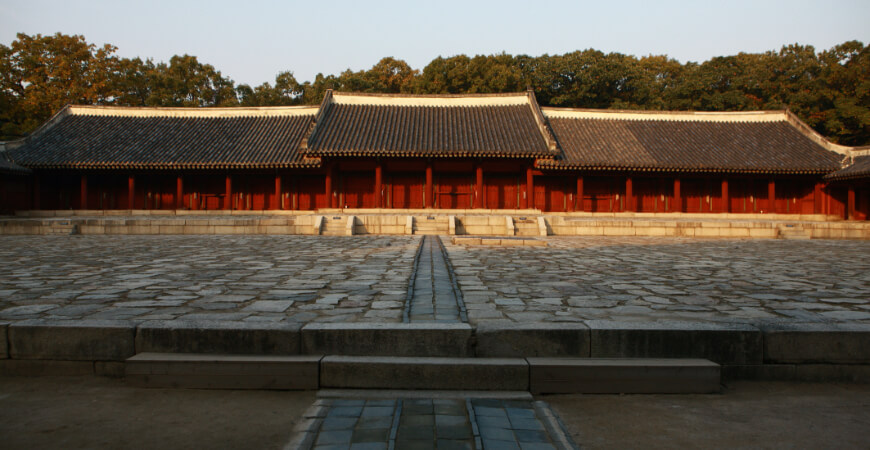 Jongmyo ShrineLink to page
Jongmyo ShrineLink to page
Jongmyo is a shrine that honors kings and queens of Joseon Dynasty and those who were recognized as such. Jonhmyo Daeje was a national event that honors kings with a ceremony since Three Kingdom Era. UNESCO designated Jongmyo Shrine as World Cultural Heritage in 1995.
Photo by (Kim Jiho)-KTO- From Incheon Port Cruise Terminal
- 58.5 km 90 min
-
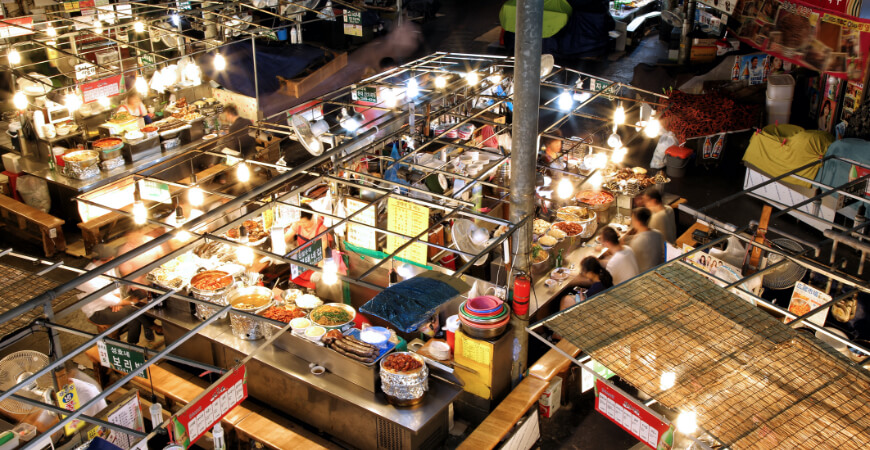 Gwangjang MarketLink to page
Gwangjang MarketLink to page
Gwangjang Market is the first year-round market established in 1905 with all kinds of foods available. Among them, top 5 of Gwangjang Market foods is Bindae tteok & mixed pancake, Mayak Kimbap, Soondae & Meori Gogi, Yookhoi and Donggeu Rangddaeng. On top of that, you can enjoy other varieties like mixed raw fish, raw fish-boiled soup and bibimbap.
Photo by (IR Studio)-KTO- From Incheon Port Cruise Terminal
- 58.8 km 85 min
-
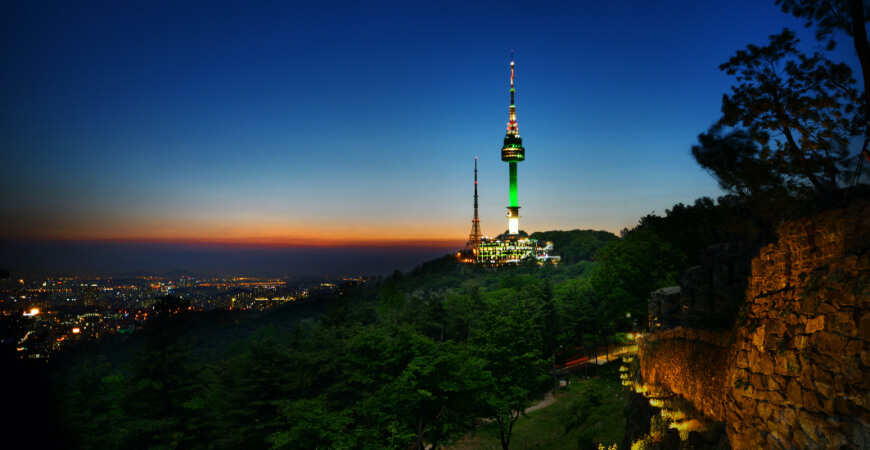 Namsan Seoul TowerLink to page
Namsan Seoul TowerLink to page
N Seoul Tower, visible from anywhere in Seoul is the landmark that represents Seoul. N Seoul Tower is the first comprehensive transmission tower established for transmitting TV and radio to metropolitan area. As the tower was made available to the public, Namsan Seoul Tower became the best tourist attractions. N Seoul Tower is 236.7m high. Considering the height of observatory, you can have a bird’s eye view of Seoul at 370m height.
Photo by (IR Studio)-KTO- From Incheon Port Cruise Terminal
- 64.3 km 75 min
-
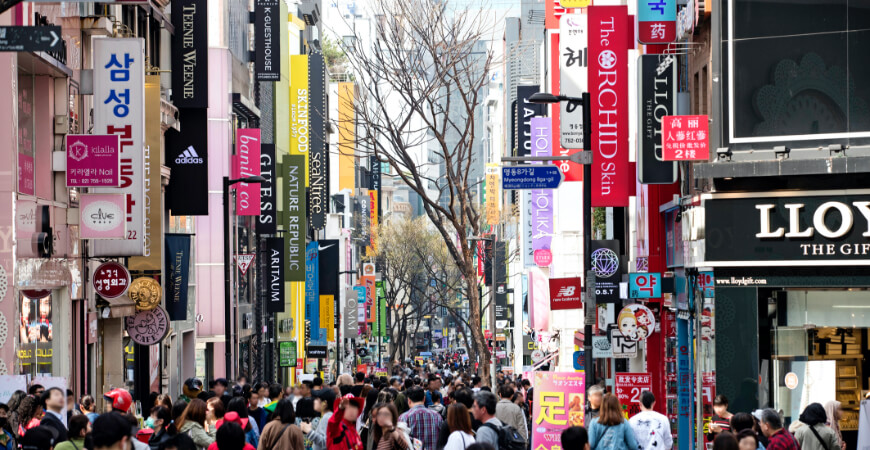 Myeongdong Shopping StreetLink to page
Myeongdong Shopping StreetLink to page
Myeongdong is a massive shopping district with all kinds of brands, department stores and street vendors. As the Mecca of fashion fit for its reputation, you can purchase a variety of products including clothes, shoes and accessories. You can enjoy more premium brands at Myeongdong than that of Namdeamun and Dongdaemun markets.
Photo by (Lee Beonsu)-KTO- From Incheon Port Cruise Terminal
- 58.3 km 80 min
-
-
-
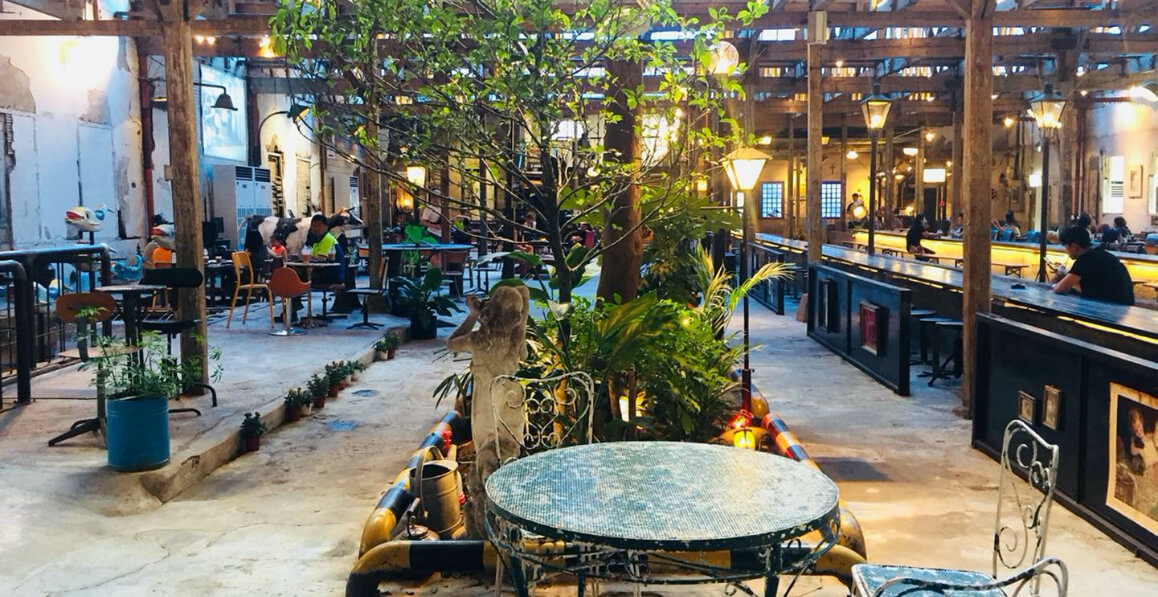 Joyang Bangjik CaféLink to page
Joyang Bangjik CaféLink to page
Joyang Bangjik was the first artificial silk factory of Ganghwa. With the passage of time, as Ganghwa fiber collapsed, the factory was turned into abandoned house. Demolishing building was reborn into a massive café. The collapsing wall side is a grand art gallery and movie theater while long work deck was turned into coffee table. The space used to be occupied with machines and workers is now filled with antiques originating from China and Europe.
Photo by Incheon Tourism Organization- From Incheon Port Cruise Terminal
- 50.9 km 57 min
-
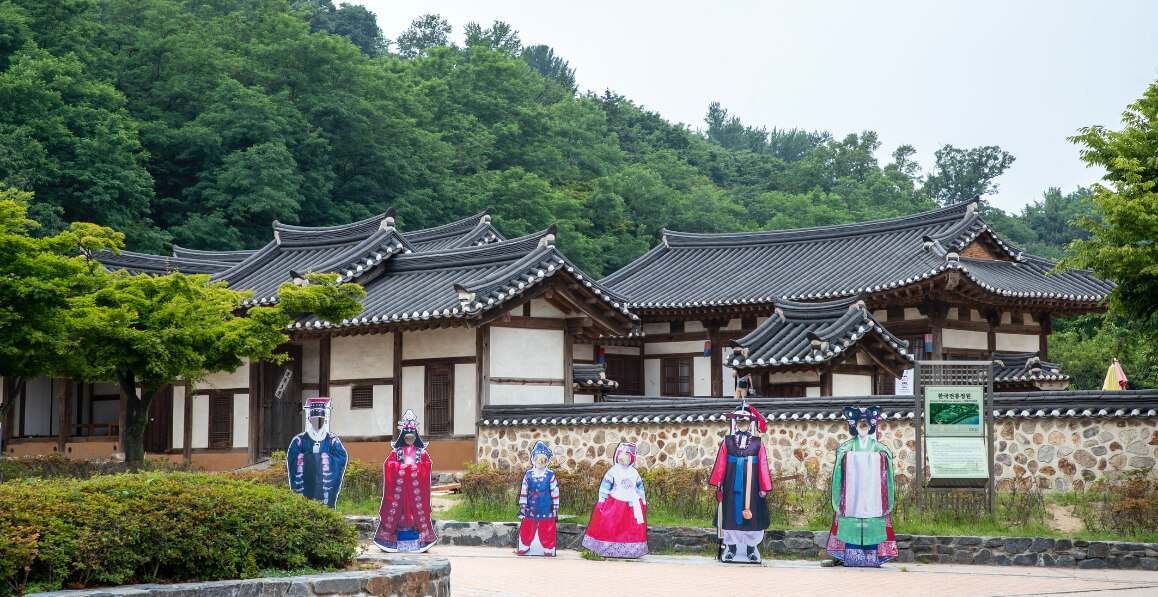 Wolmi ParkLink to page
Wolmi ParkLink to page
Wolmi Park was off-limits to citizens as the military base was stationed for over 50 years. But as Incheon Metropolitan City handed over the space on Sep 10 of 2001 from the Ministry of Defense, the area was transformed into a park. Wolmi Park, as a place for battle field between super powers in pre-modern and modern times, preserves the natural ecosystem. For its historic value, the area was reestablished as ecological park and historic park.
Photo by (Kim Jiho)-KTO- From Incheon Port Cruise Terminal
- 11.8 km 30 min
-
 Wolmi Sea TrainLink to page
Wolmi Sea TrainLink to page
Wolmi Sea Train is the only downtown tour monorail that provides the landscape of the nature including the sea, mountain, island and pre-modern history of port opening and Korean War history along with the industrial site around the ports.
Photo by Incheon Tourism Organization- From Incheon Port Cruise Terminal
- 11.5 km 30 min
-
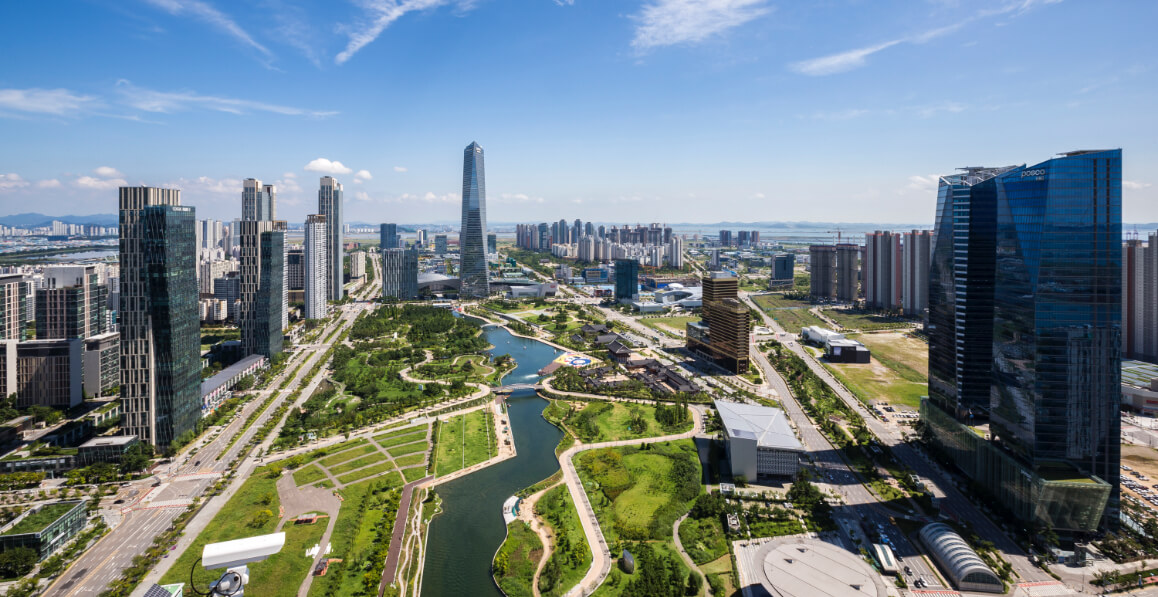 Songdo G-Tower ObservatoryLink to page
Songdo G-Tower ObservatoryLink to page
Songdo G-Tower Observatory is the landmark of Songdo, offering the view of Central Park. G-Tower houses Incheon Free Economic Zone Authority and Green Climate Fund, UN umbrella International Organization. The 33rd floor is used for observatory.
Photo by Incheon Tourism Organization- From Incheon Port Cruise Terminal
- 6.6 km 13 min
-
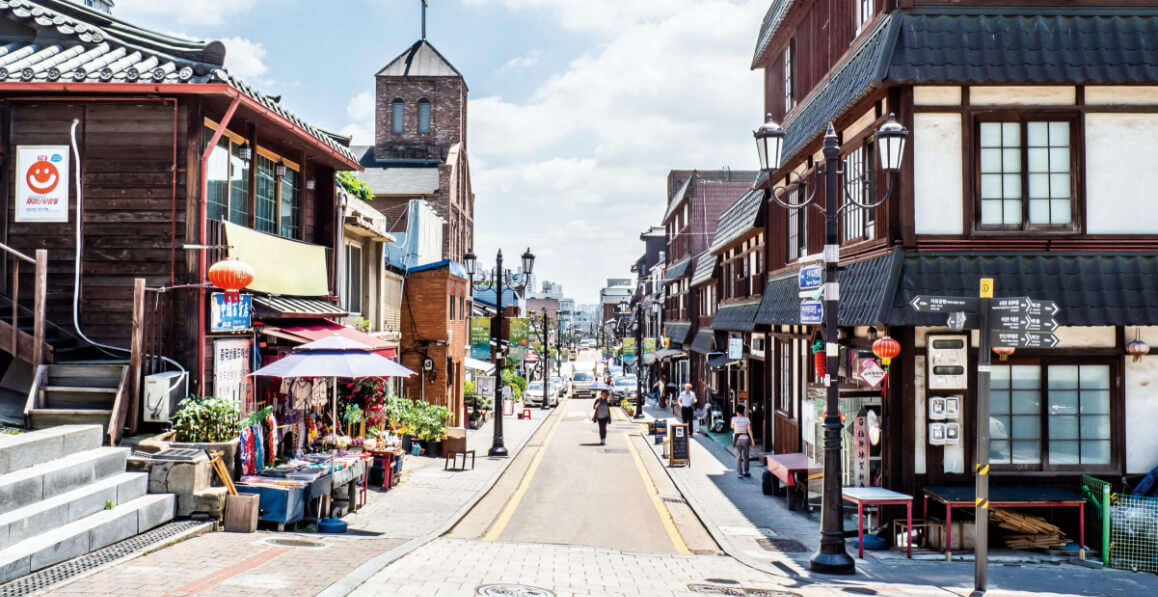 Gaehangjang (Open Port Area) StreetLink to page
Gaehangjang (Open Port Area) StreetLink to page
Gaehang Jang Street is a place where 126 years of history of port opening and culture are integrated, honoring the port that opened in 1883. You can appreciate pre-modern architecture including Junggu District Office which was the former Japanese Consulate, Incheon Office of Japan 1st Bank, Japan 18th Bank and 58th Bank.
Photo by Incheon Tourism Organization- From Incheon Port Cruise Terminal
- 10 km 26 min
-
 Jayu ParkLink to page
Jayu ParkLink to page
Jayu Park is the first Western-style park established five years after the port of Incheon was opened. As the park is located at high altitude with wide land size and rich forest, it is a great fit for taking a walk. You can enjoy a bird’s eye view over the near sea of Incheon from the top of Jayu Park. Inside Jayu Park, small zoo, Palgakjeong Pavilion, Yeon-Pavillion and chair is available.
Photo by (Lee Beonsu)-KTO- From Incheon Port Cruise Terminal
- 10.2 km 26 min
-
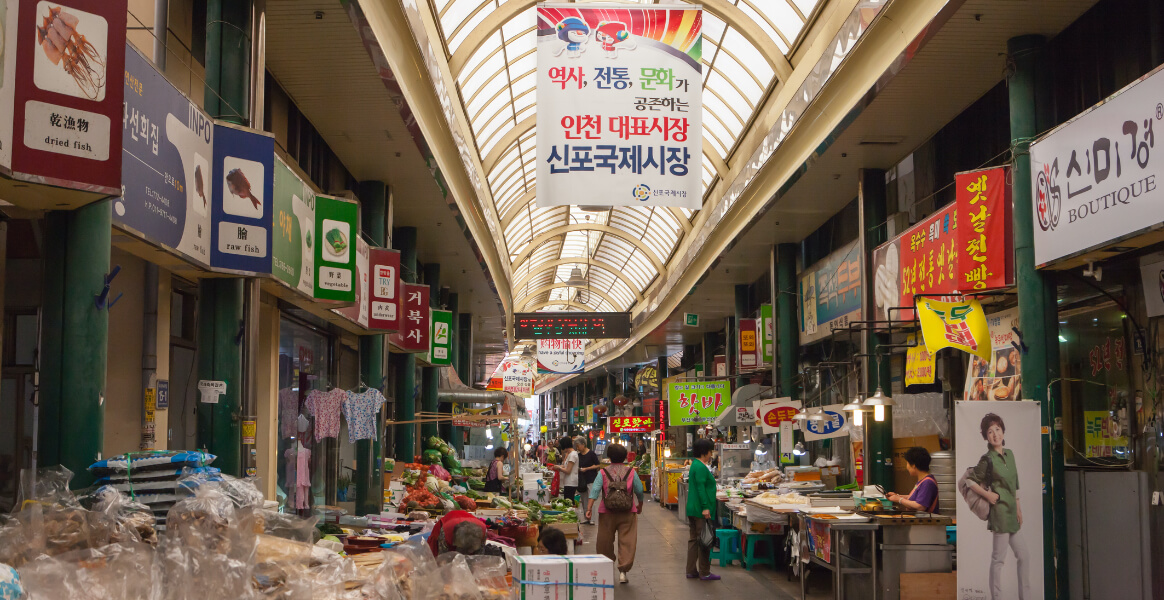 Sinpo International MarketLink to page
Sinpo International MarketLink to page
Shinpo International Market originated from 19th century where merchants started to sell high-quality vegetable targeting Japanese, Chinese and Western people. Shinpo market, close to International Ferry Passenger Terminal, was reestablished as multi-culturally connected international merchant market.
Photo by (Kim Jiho)-KTO- From Incheon Port Cruise Terminal
- 9.8 km 25 min
-
-
-
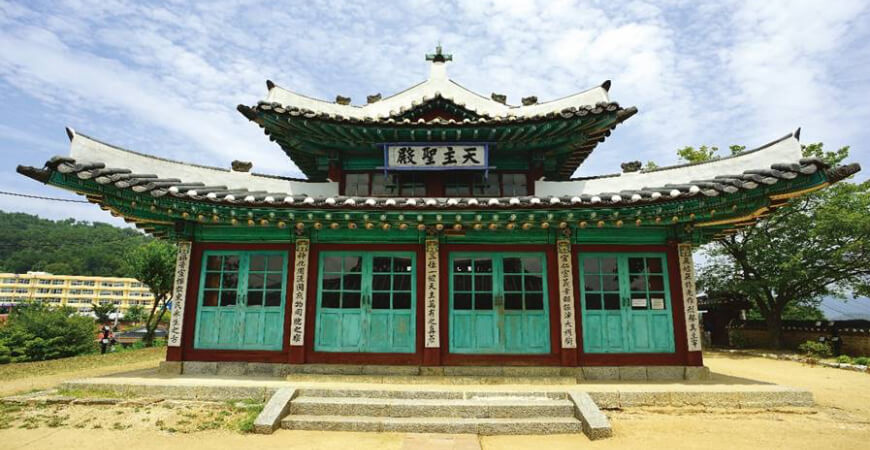 Ganghwa Anglican ChurchLink to page
Ganghwa Anglican ChurchLink to page
Gangwha Cathedral was consecrated by Charies Jone Corfe, the inaugural bishop in 1900 and named as St. Peter and Paul's Cathedral. With mid-story structure, the Cathedral followed traditional Korean architecture while the placement and internal structure were inspired by Western basilica architecture, signifying the beauty of harmony and tradition.
Photo by Incheon Tourism Organization- From Incheon Port Cruise Terminal
- 50.6 km 55 min
-
 Ganghwa Peace ObservatoryLink to page
Ganghwa Peace ObservatoryLink to page
Ganghwa Peace Observatory was established at the Civilian Control Line at northernmost Ganghwado Island, Cheolsan-li, Yangsa-myun. Water stream coming from Hangang River, Imjingang River and Yeseonggang River meets Yellow Sea facing North Korea between river-like sea in the middle. Water area here is equivalent to DMZ of the land.
Photo by Incheon Tourism Organization- From Incheon Port Cruise Terminal
- 61.4 km 65 min
-
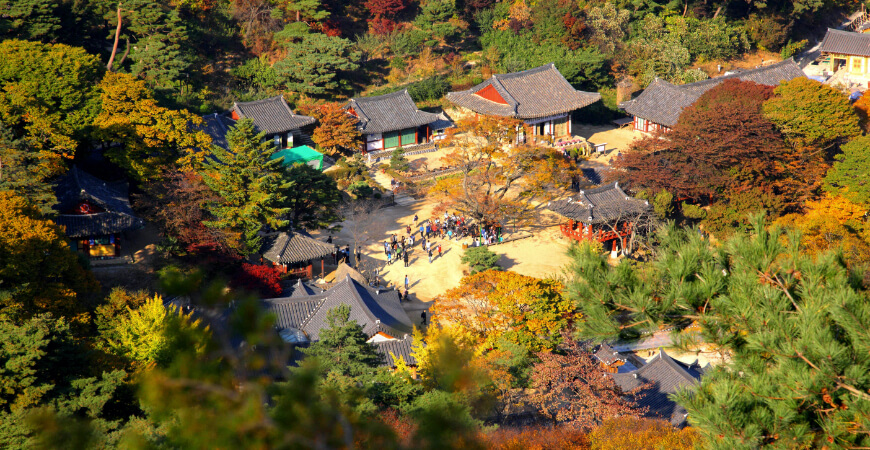 Jeondeungsa TempleLink to page
Jeondeungsa TempleLink to page
Jeondeungsa Temple is the oldest and biggest temple in Korea. Jeondeungsa Temple that goes well with mountain, gives different flavor upon seasonal change. Notably, you can enjoy a brief walk looking around yellow gingko trees and maple. On the underground, you can enjoy Museol Jeon, a modern-style Buddhist Sanctuary and Seowun Gallery. At the Gallery, Buddhism art exhibitions are available year round.
Photo by Incheon Tourism Organization- From Incheon Port Cruise Terminal
- 42.4 km 50 min
-
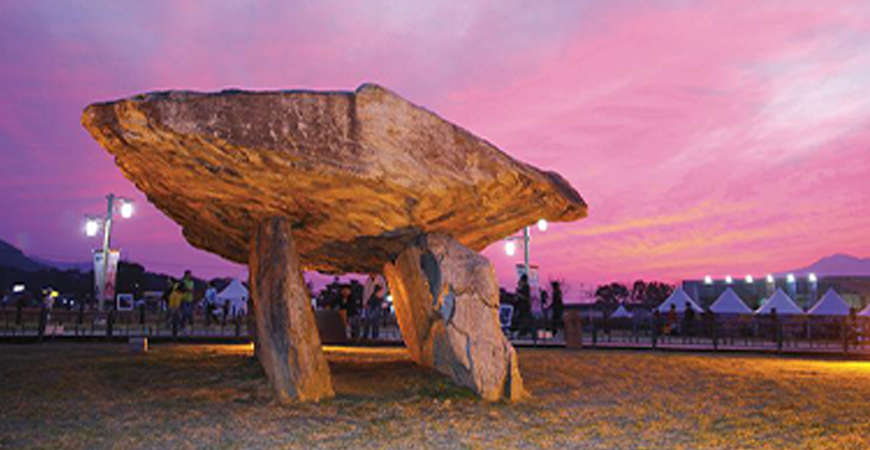 Ganghwa Dolmen SiteLink to page
Ganghwa Dolmen SiteLink to page
Ganghwa Dolmen Site is the representative cemetery using 710cm long, 260cm high and 550cm wide stone. It is Northern type Dolmen, serving as a great research material for ancient history. In 2000, UNSECO designated Ganghwa Dolmen Site as the World Cultural Heritage along with Dolmen Site at Gochang and Hwasoon.
Photo by (Kim Jiho)-KTO- From Incheon Port Cruise Terminal
- 56.7 km 60 min
-





